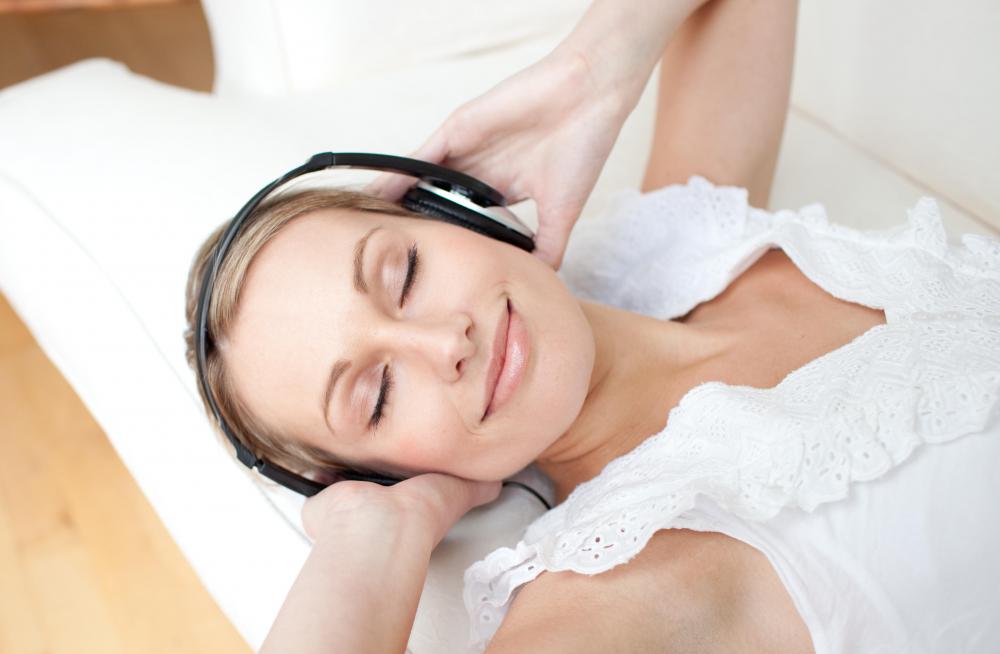At InfoBloom, we're committed to delivering accurate, trustworthy information. Our expert-authored content is rigorously fact-checked and sourced from credible authorities. Discover how we uphold the highest standards in providing you with reliable knowledge.
What are Alpha Waves?
Alpha waves are one type of brain wave that can be recorded by an electroencephalograph (EEG). A predominance of alpha waves in the brain wave pattern indicates an individual is in a relaxed but aware state. Other types of brain waves include beta, theta and delta waves, each pointing to a different state of brain functioning. In addition to these basic types of brain wave patterns, there are also other electrical signatures generated by the brain such as “bursts” or “spindles” which occur briefly.
Nerve endings in the brain generate electrical activity in the form of pulsations that can be measured by sensors called electrodes. Electrodes are placed next to the scalp and connected to an electroencephalograph. By placing the sensors next to the scalp, the machine can record the brain’s electrical pulsations, translating the activity to a readout of peaks and troughs. The height of the peak indicates amplitude, while the distance between peaks, frequency.

Starting with the most active brain wave pattern, beta waves indicate alertness. This electrical activity starts at 13 Hz and is likely dominant as you read this page. Higher frequencies in this range (26 Hz and up) are sometimes further defined as gamma waves. Agitated states of emotion such as fear or anger generate beta waves, as do tasks that require concentration or create anxiety.

Alpha waves have a slower frequency of 8-13 Hz, corresponding to a state of relaxation. You are experiencing the alpha state when you allow your mind to drift or float. You might feel yourself “zoning out” when watching television, sitting in a class, at a lecture, or even while driving. Meditation can also produce alpha waves and the alpha pattern plays a significant role in the dream state.
As one is falling asleep the Theta pattern predominates at 4-8 Hz. This state, often filled with mental imagery, is sometimes referred to as “twilight sleep.” Theta waves might also be predominant during deeper states of meditation.

Finally, delta waves pulsate at a mere 0.5-4 Hz, indicating deep, dreamless sleep. Delta waves are also the signature of comatose patients. It is interesting to note that babies experience a predominance of delta waves when awake. In an adult, this can be indicative of diseases such as schizophrenia, dementia, of intoxication or of drug-induced delirium.

In today’s stress-conscious world, the alpha state has received much attention because of its association with relaxation. Some types of alternative medicines promote purposely changing the brain wave pattern to produce calming alpha waves. Simple techniques such as closing the eyes and sitting quietly while letting stress “drain” from the body might have the effect of increasing alpha waves and altering the mood.

Self-therapy involving positive affirmations is commonly believed to be more effective when practiced in an alpha state. Such techniques often include listening to calming, tranquil music or sounds of nature as a prelude to affirmations. Other disciplines geared towards increasing alpha waves include meditation, yoga and chanting. Creative outlets like painting or playing an instrument might also increase alpha wave activity.
AS FEATURED ON:
AS FEATURED ON:
















Discussion Comments
What is R Kayne's first name. and where can i find information about him for bibliographical needs. Thanks
Who wrote this article?
Post your comments